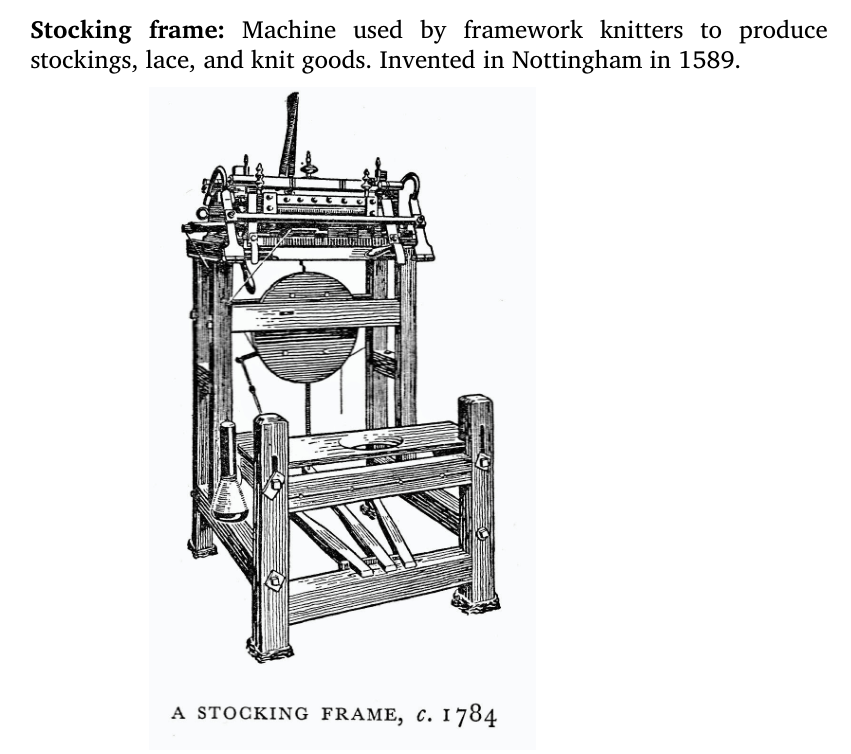created, $=dv.current().file.ctime & modified, =this.modified
tags:technologycomputershistory
Why I am reading
Had this one in the queue since picking it up at release.
Evolution of Luddite from a pejorative and digging into that.
It is time…
A soul is of more value than work or gold. - George Mellor
Imagine millions of ordinary people plagued by a fear that technology is accelerating out of control. They worry that machines are coming to take away their jobs, erode their status, threaten their futures, and upend the order of their lives. Inequality is rampant, and power is wielded by those commanding wealth and new technologies. Every sign points to immense social and economic upheaval on the horizon.
Winter 1812
A contingent of workingmen - artisans, weavers, machinists among them, assembled after dark to destroy the machines that had been built to replace them (cheaply, and less artfully).
This book is about why so much blood was spilled over machines in the early nineteenth century—the first time that technology was used to replace human jobs en masse—and about the thunderous uprising that followed. It’s also a story about the twenty-first century, when calls of “The robots are coming for our jobs” and “Big Tech is becoming too powerful” are everywhere, and economic conditions look all too familiar to historians of the Industrial Revolution.
In 1812, skilled weavers feared that a factory filled with power looms would automate the job of weaving cloth and put them out of work.
Automation is often presented as an unfortunate but unavoidable outcome of “progress” a reality that workers in any technologically advancing society must simply learn to adapt to.
But in the 1800s, automation was not seen as inevitable, or even morally ambiguous. Working people felt it was wrong to use machines to “take another man’s bread,” and so thousands rose up in a forceful, decentralized resistance to smash them.
Power Looms
1786 - Edmund Cartwright believed any work a human did with a tool, a machine could do. Even the act of weaving a cloth on a loom – work carried out by hundreds of thousands of England’s skilled artisans.
He was scoffed at –weaving too complex.
Tireless Spinners
…the complex towered over the riverside. Inside its walls churned machines that tirelessly spun cotton into yarn. Historically, spinning had been done by teams of women, and it took more hours to prepare the yarn than to weave it into cloth. But Arkwright used hydropower instead, directing water from the river into a giant wheel attached to the four-story building to run his patented water frame. He no longer needed those teams of people; instead, he could spin cotton into yarn nearly around the clock.
Lee Legend
William Lee, in 1589 devised a machine, that would mimic the movements of a hand knitter, making it easier to produce stockings, socks, tights and other knit garments.
The legend is that he made it, upset that his wife spent more time knitting than with him.
In the 1760s, a weaver and cotton spinner named James Hargreaves invented the spinning jenny, which let a single worker spin multiple threads into yarn with the crank of a handle—previously it took six.

Cartwright built his prototype without ever observing a weaver in action, and wound up with a machine that required twice the manpower to produce a single garment.
